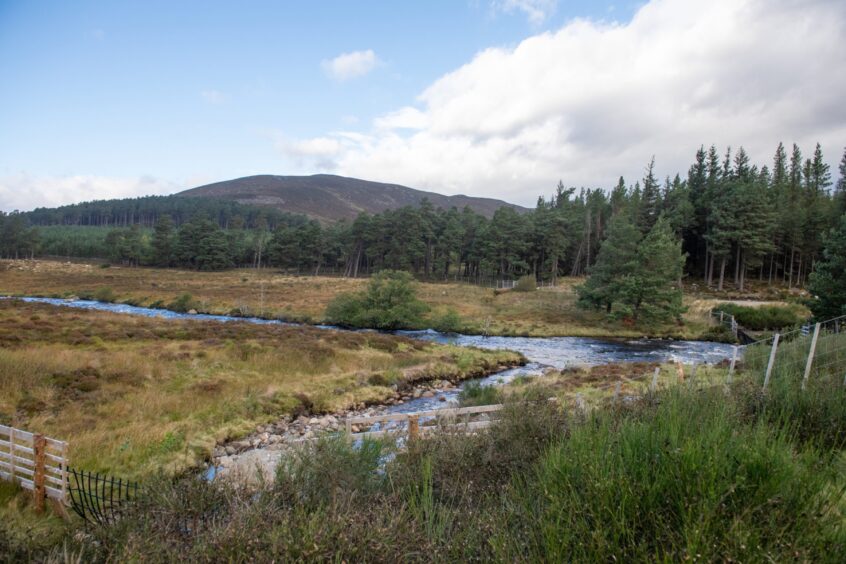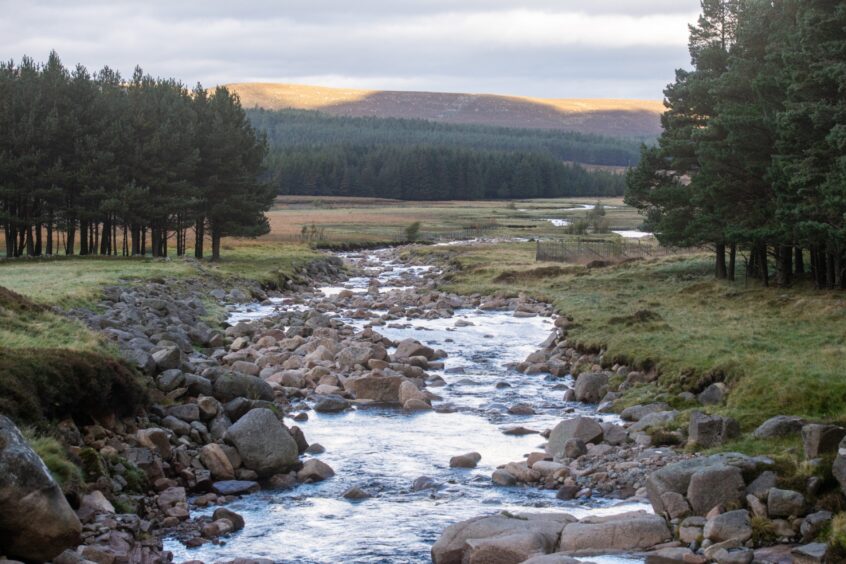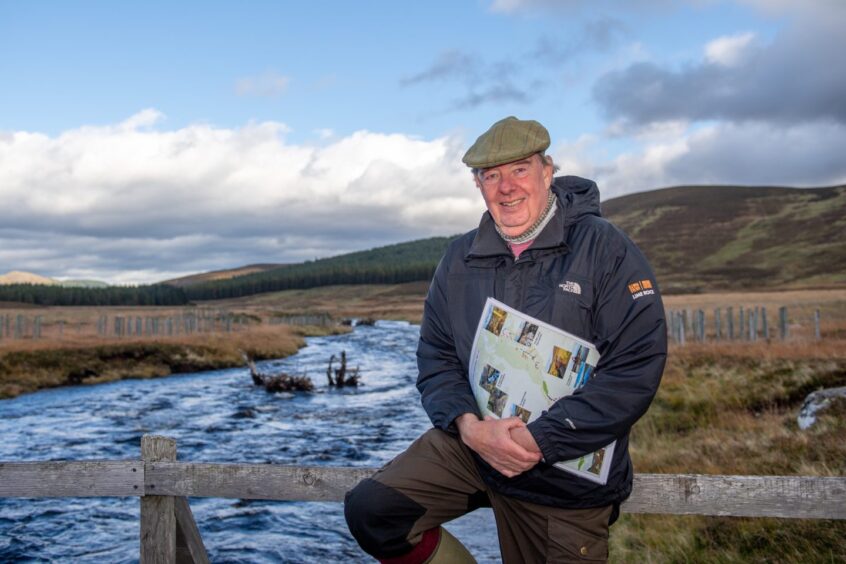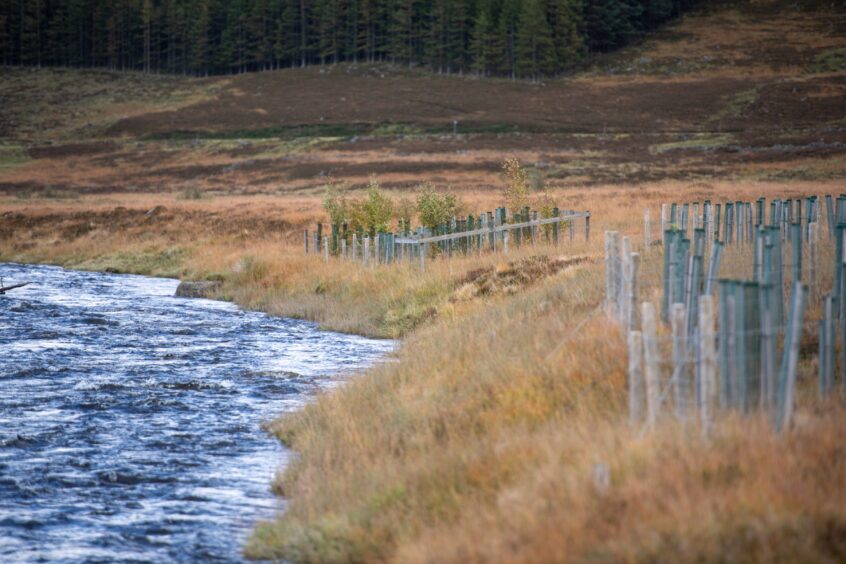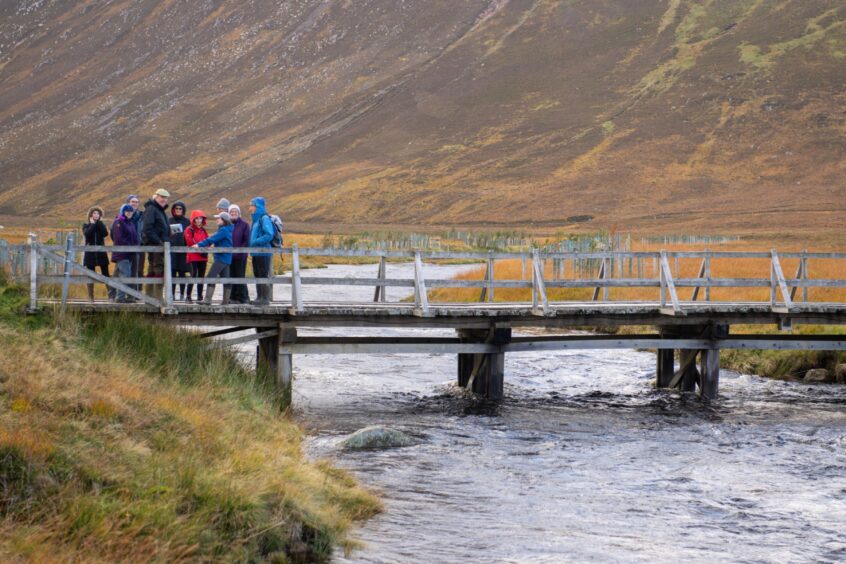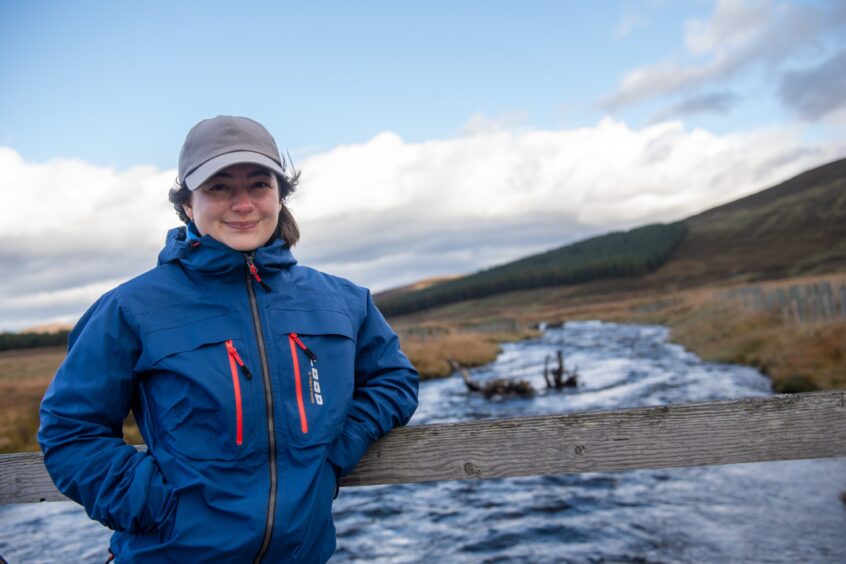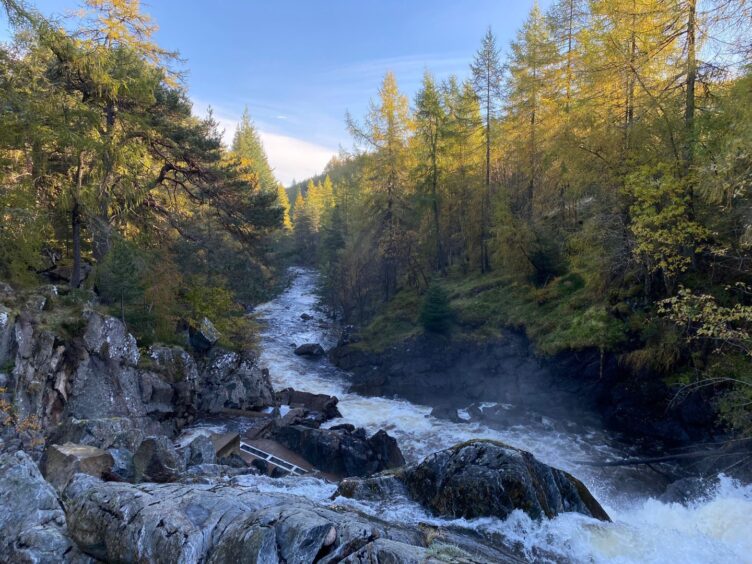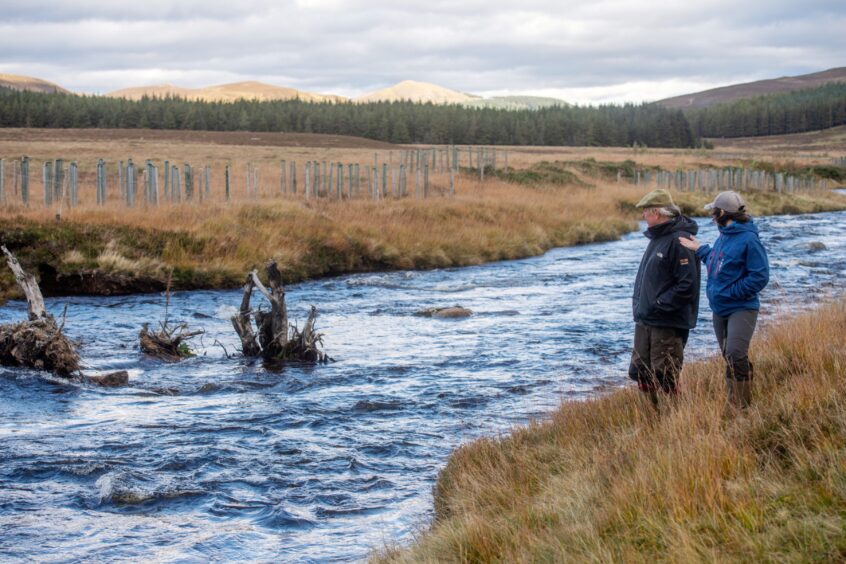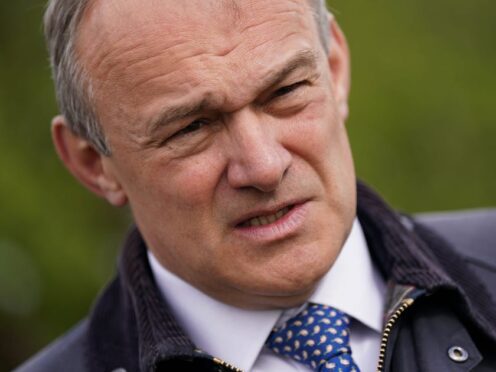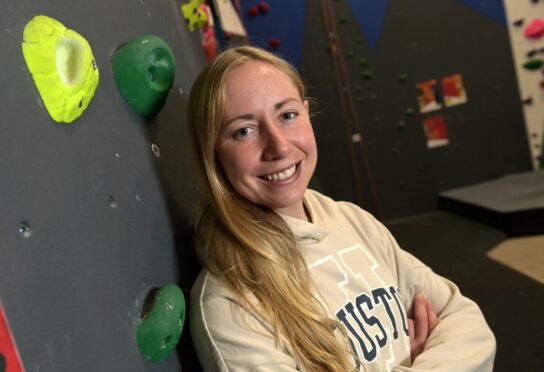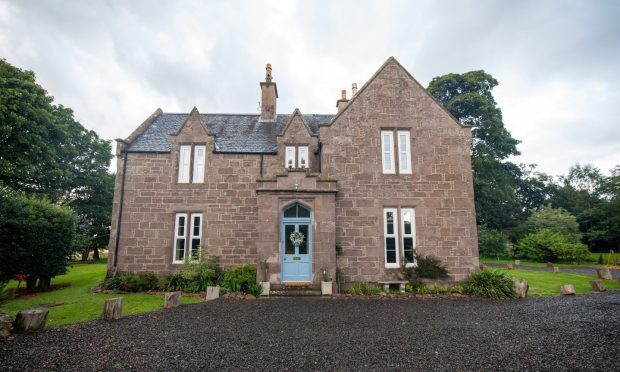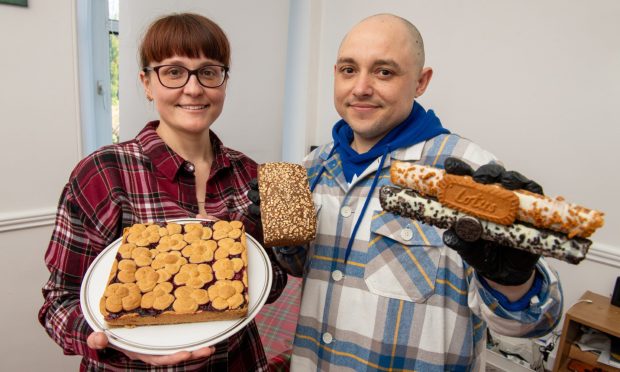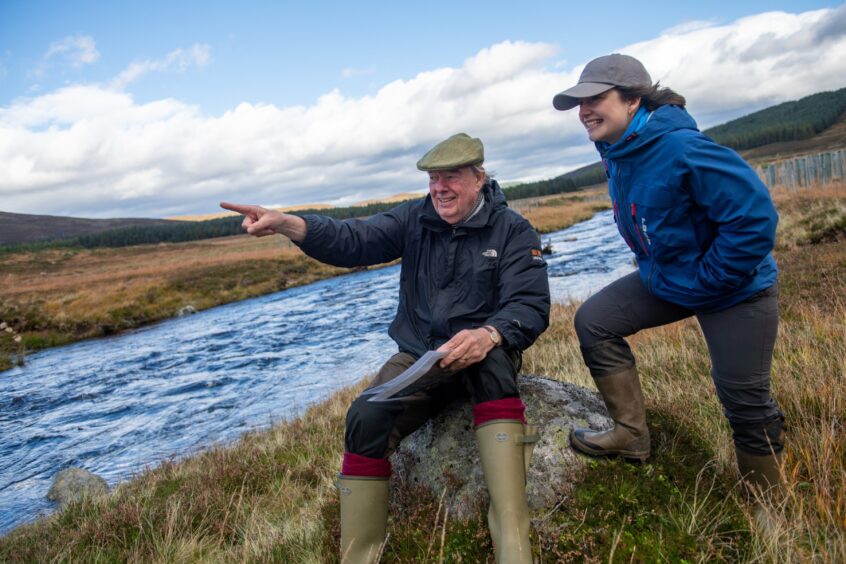
Looking out at the breathtaking beauty of Glen Muick with the river in the distance, it’s clear why this part of Aberdeenshire has captured the hearts of so many – including the royal family.
Part of the Cairngorms National Park, the River Muick – one of the larger tributaries of the upper section of the Dee, is one of several at which the River Dee Trust and Dee District Salmon Fishery Board are carrying out vital restoration works.
Three years ago they launched their £5.5million One Million Trees campaign.
Its focus? To combat the impact of climate change on the river and the salmon it is home to.
The risk of rising temperatures
Rising water temperatures in rivers have become an increasing concern across Scotland as they pose a risk to many of the country’s freshwater species – including Atlantic Salmon – which the River Dee is famous for.
To find out more about the restoration work Your Life joined Lawrence Ross of the Dee District Salmon Fishery Board and Keilidh Ewan from the River Dee Trust for the second of its third Walk and Talk events this year.
The One Million Trees project was launched in 2020 and is geared towards providing 50% woodland cover along the riverbanks.
Government funding in the form of the Forestry Grant Scheme will approximately cover 80% of the tree planting costs. However, the River Dee Trust will need to raise well over £1 million to fund the remainder.
Loss of woodlands
As well as reducing water temperatures the aim of the work is to help stabilise river channels, provide leaf litter for food and reduce riverbank erosion. It will also assist with natural flood management and improve habitat networks.
Loss of historic woodlands has left the area vulnerable, the upper Deeside only has 8% woodland cover – a sobering statistic.
Trees provide shade and in turn this helps the fish not only to survive but to thrive.
Temperatures higher than 18C become harmful for adult salmon. On the Dee temperatures above 20C have become more common.
Campaign almost at half way mark
One stark example is the record-breaking temperature of 27.5C in the summer of 2018 on the River Gairn – another tributary of the Dee. If temperatures reach 30C then the fish die.
So far the 15-year One Million Trees campaign is ahead of target, and is almost at the halfway mark with 461,000 trees planted along the banks of the Dee and its tributaries.
Along the Muick, where we are headed one blustery October morning, restoration work has been carried out. The work has seen almost 140,000 riverbank trees covering around 92 hectares planted.
Chair of the Dee District Salmon Fishery Board Lawrence Ross, and education and outreach officer Keilidh Ewan guided the small group on the walk, explaining the importance of the project and detailing work done so far.
Lawrence explains how marine survival rates have dropped over the last 50 years from around 40% to 2% or less. And he highlighted how catches on the River Dee have fallen – the biggest number of February catches was 2,777 in 1957, but now he says “we cannot get to 50”.
He said: “Pressures on Atlantic salmon are linked to climate. Elevated temperature is a direct threat to salmon survival both in the river and at sea. Salmon thrive in plentiful quantities of clean, cold water.
‘Summers are becoming hotter and drier’
“Unfortunately, these historically standard conditions are changing. Early year droughts are becoming common most likely due amongst other things to the loss of the Cairngorms snowpack which previously fed the river during spring and assisted with juvenile salmon migration to sea. It also helped cool the water.
“This year, with little spring snowmelt, winter moved directly into summer with water temperatures exceeding 19C by the end of May.
“Summers are becoming hotter and drier with the risk of drought rising to 50% compared to 6% not all that long ago. Rain, when it comes, falls on hard ground and runs off quickly.
“Severe floods in recent years have resulted in riverbed instability and loss of habitat which directly affects salmon and invertebrate food sources. They have also wiped out 99% of the freshwater pearl mussel population.”
As we head out the road to Glen Muick we stop to look at some of the work done with Lawrence pointing up the glen to planting projects, including a large fenced off enclosure which was planted last spring and contains around 50,000 trees.
Not only do the trees create a habitat, but the bankside vegetation provides food for the fish.
‘A race against time’
Lawrence tells us: “At 16C juvenile fish begin to stop feeding. A few degrees higher and all ages of fish experience thermal stress which leaves them vulnerable to disease and predation. At 30C they die.
“We recognised the threat of rising temperatures about a decade ago and started planting trees on the Dee catchment. Small steps to start with but more recently on a
larger scale which is vital if we are to have any beneficial impact. It is never too late to start but this work should have commenced 50 years ago. We are in a race against time.”
The project has benefitted from the efforts of volunteers, with around 100 a year involved. This year has seen volunteers from firms such as Neptune Energy and CNOOC involved in tree planting at various sites, while community groups such as the Rubislaw Scouts have also taken part.
Glen Muick is just one of a number of restoration sites, some of the others include Garlogie, River Clunie and Beltie Burn.
Muick has its own climate
And recently more than £233,000 was awarded through the Scottish Government’s Nature Restoration Fund for work to restore Cattie Burn, on the Ballogie Estate near Banchory.
As we made our way from the meeting point in Ballater towards Glen Muick education and outreach officer Keilidh Ewan quipped that Muick has its own climate. She wasn’t wrong, during our short journey the dark ominous clouds looming above the surrounding hills seemed to signal that rain was about to pour down.
But when we began our walk from the Glen Muick Visitor Centre at the Spittal of Glen Muick towards the river blue started to appear in the sky with the sun giving an autumnal glow to the landscape.
Repurposing old trees
The restoration work is about more than the tree planting though. At Glen Muick among the measures which have been put in place are 70 large wood structures, each made up of four wind-blown trees.
And while looking out at the river we can see some of them, the structures help the habitat as well as providing shelter from predators, heat and floods. While 190 leaky and debris dams help with flood management as well as releasing water when levels are low.
While the trees being planted as part of the One Million Trees campaign are going along the riverside, the windblown trees are embedded in the water. And after Storm Arwen around 700 old trees were donated from Banchory to be used for large wood structures.
Explaining Keilidh said: “Those trees that have been embedded in the water, these large wood structures is what we’re calling them, that’s come from the repurposing of windblown.
“The trees that we’re planting are all young saplings that go in, whereas those that are going into the river embedded are those older trees that have suffered from the storms.”
Along the way up to Glen Muick Keilidh also pointed out the fish pass in the river – which is a structure that helps the fish move up and down the river.
Education is key
Our journey took us onto both the Glen Muick and Balmoral estates – both of who support the work to transform the habitat, as does the Cairngorms National Park Authority.
If the weather and climate is key – so too is education. As part of her role Keilidh spends time visiting schools as well as taking part in the Walk and Talk events.
She highlighted how crucial educating youngsters on the issue is, saying: “It’s really important, particularly for the school kids that we’re going in and speaking to, some of them haven’t visited a river before,
“I think we take it for granted a little bit here being right on the river’s edge. But if you think of some of the schools and Aberdeen, they’ve got these two big rivers that flow through the city, and some of them don’t even realise that.
“It’s really important to share some of that heritage that’s on their doorstep with them, and really inspire them to be our next custodians really, for the children, in terms of future proofing the river, we want to really inspire people to care for the river that they’ve got on their doorstep.
‘We’ve got this beautiful river’
She added: “These kids are really going to be that next bunch of countryside rangers, biologists that hopefully get some inspiration from what’s on their doorstep.
“Beyond that, we do a lot of community outreach work as well, so our walk and talks, getting people out on sites to see it. Really that’s just raising awareness at a local level. We’ve got this beautiful river, and people maybe don’t see some of the challenges that it’s facing.
“If we don’t know those challenges, then we don’t know how to work together to protect it.”
To support the trust and for more information about its work go to riverdee.org.uk
